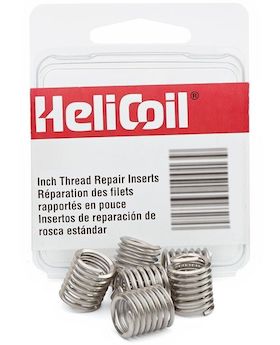
-----
Plating build-up in tapped holes
Q. My name is Rob and I have been a process engineer in the microwave industry for 3 years. We manufacture filters for the cellular phone industry. These filters are solid aluminum "shoe box" size rectangles with cavities milled throughout. These boxes have to be plated with silver (200 microinches) over nickel strike (100 microinches) for conductivity. The lid is fastened on the top of the box with about 100-200 small screws (2-56 and 4-40). The other surfaces (sides and bottom) also have some tapped holes. We currently are experiencing major manufacturing problems with plating affecting tapped hole integrity. Even using over sized taps such as H6-H9, we still have extreme inconsistencies in clamp force while fastening due to the build up of plating inside the tapped holes. Is there an economical way to mask plated holes or shield the plating from entering tapped holes? Current estimates for masking are $.20/hole or $40.00/filter which is not economically feasible.
Robert McCulley- Salisbury, Maryland
2000
2000
A. 200 #4 holes is mind numbing. Thru holes are not that bad. We used tygon tubing of various sizes. Cut the end of the tubing on a taper, stretch the tubing by pulling, thread it thru the hole and trim as required. The tubing will unstretch and very nicely fill the holes. They pull out nicely after a dip in warm water rinse. VWRSP.com used to cary a wide variety of tubing down to extremely fine. for the blind holes, you can use nylon screws that come the closest and plug the hole. You have not said a magic word, Heli-coil. If these are tapped for them, you will have to cross thread the best you can as I am not aware of any nonconducting screws for Heli's.
One alternative is to use plastic round toothpicks. Lightly tap an appropriately cut one into the hole. Too hard and you may have to drill it out.
Have you considered only drilling the most critical holes and tapping them after plate. You will probably have to use DI water for tapping fluid so that the silver will not be too messed up.
Taper plugs are great, but tiny tiny ones are just not stiff enough to be easily installed and stay in. It is worth a try.
James Watts- Navarre, Florida
A. My company does the type of silver plating for the products you are referring too. Some of our customers require us to mask the holes with screws and others don't. $.20 per hole for masking sounds excessive.
Your current plater is probably building excessive thickness on the outside of the parts because they have to meet the minimum silver down the recessed cavities. We have developed several ways to successfully meet the minimum thickness in the cavities while not building excessive thickness in high current density areas along the outside of the parts. The threaded holes maintain their integrity.
Brad Smith- Evansville, Indiana
2000
Q, A, or Comment on THIS thread -or- Start a NEW Thread
